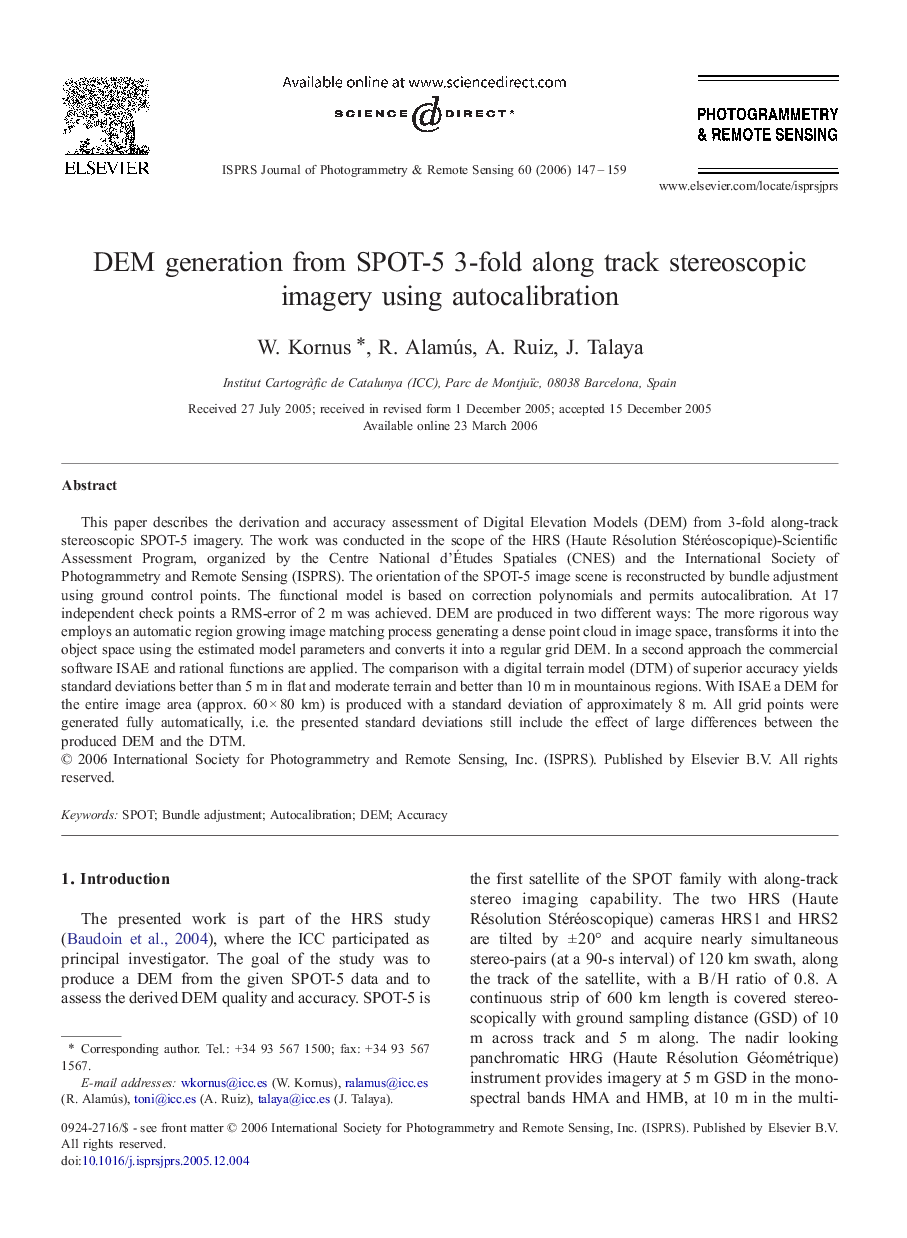| Article ID | Journal | Published Year | Pages | File Type |
|---|---|---|---|---|
| 556189 | ISPRS Journal of Photogrammetry and Remote Sensing | 2006 | 13 Pages |
This paper describes the derivation and accuracy assessment of Digital Elevation Models (DEM) from 3-fold along-track stereoscopic SPOT-5 imagery. The work was conducted in the scope of the HRS (Haute Résolution Stéréoscopique)-Scientific Assessment Program, organized by the Centre National d'Études Spatiales (CNES) and the International Society of Photogrammetry and Remote Sensing (ISPRS). The orientation of the SPOT-5 image scene is reconstructed by bundle adjustment using ground control points. The functional model is based on correction polynomials and permits autocalibration. At 17 independent check points a RMS-error of 2 m was achieved. DEM are produced in two different ways: The more rigorous way employs an automatic region growing image matching process generating a dense point cloud in image space, transforms it into the object space using the estimated model parameters and converts it into a regular grid DEM. In a second approach the commercial software ISAE and rational functions are applied. The comparison with a digital terrain model (DTM) of superior accuracy yields standard deviations better than 5 m in flat and moderate terrain and better than 10 m in mountainous regions. With ISAE a DEM for the entire image area (approx. 60 × 80 km) is produced with a standard deviation of approximately 8 m. All grid points were generated fully automatically, i.e. the presented standard deviations still include the effect of large differences between the produced DEM and the DTM.
